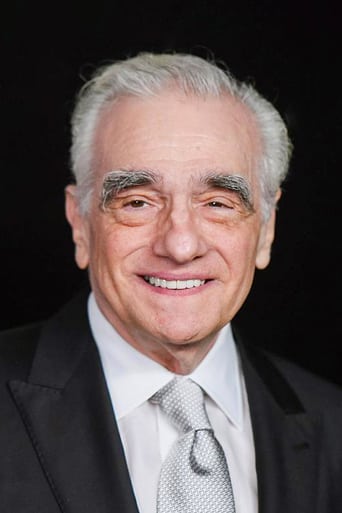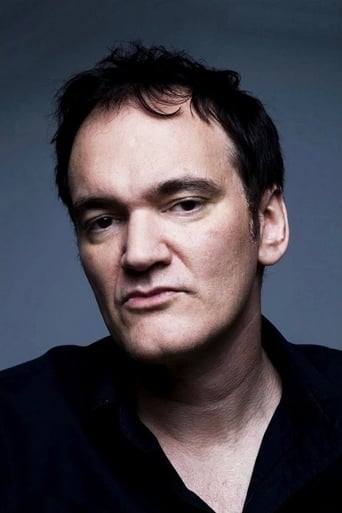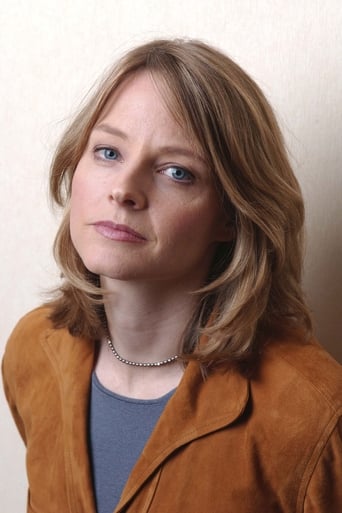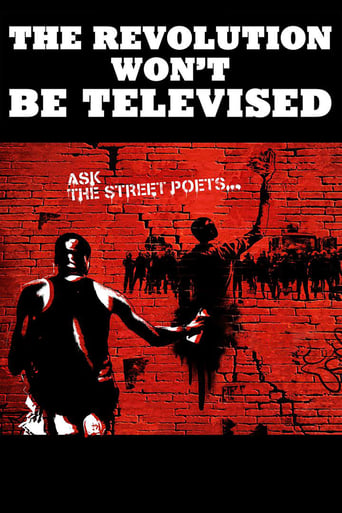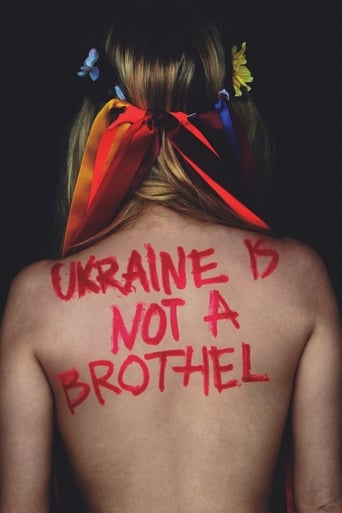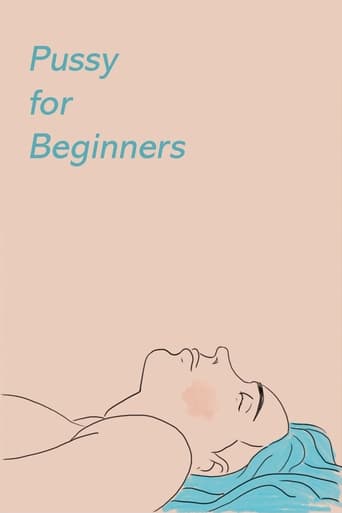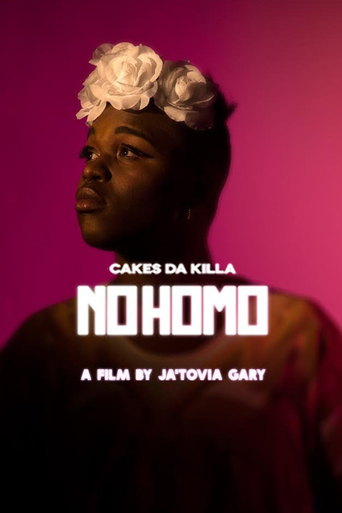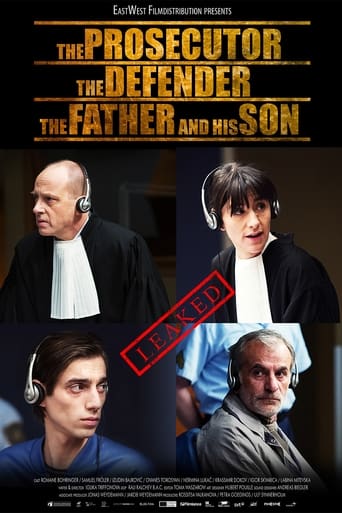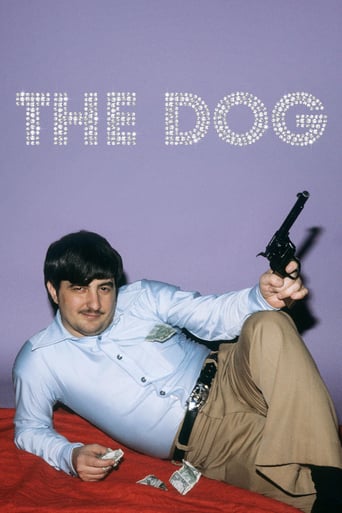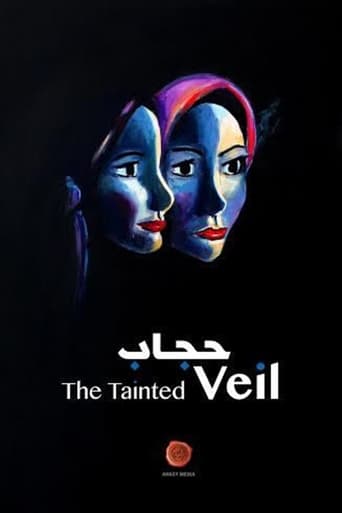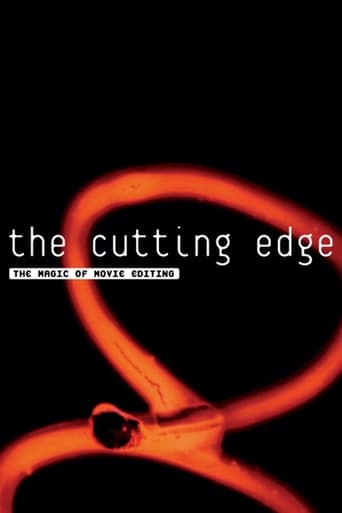
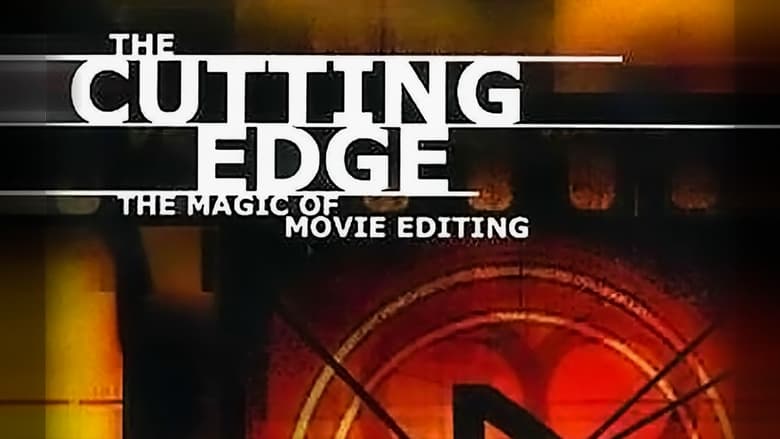
The Cutting Edge: The Magic of Movie Editing (2004)
Documentary about the art of film editing. Clips are shown from many groundbreaking films with innovative editing styles.
Watch Trailer
Cast


Similar titles
Reviews
This is a must see documentary for any serious film buff. For all you folks out there that dismiss older films, you may be surprised by your favorite directors such as Quentin Tarantino, Martin Scorsese, Steven Spielberg and James Cameron praising the magnificence of silent films and many classics. Without these classics and the skill involved in making them, today's movies wouldn't be what they are. A brilliant and informative documentary. It very thoroughly explores a movie art form that is often not understood and certainly unappreciated. The editing of a film is very instrumental in its success. However, not many people appreciate it.
This is fascinating stuff. There's room enough in editing for both the technician and the poet.The documentary is narrated by Kathy Bates and, as the list of participants reveals, has a couple of dozen commentators. Not all of them are household names, of course, because who knows the names of any editors? Interesting that the craft started with women seated at their desks and cutting and gluing the old-fashioned way. It was thought proper to put a film through an assembly line of women because, well, that's a woman's job, isn't it? Cutting, snipping, crocheting, macramé, sewing -- weaving away forever like Penelope.And it STILL seems to be at least one of the occupations where the men haven't moved in and taken over entirely. (Another is superstar modeling, where the beautiful woman is paid about ten times what the beautiful man is paid.) One might think of the editor as some pale ectomorph buried in his cellar, gawking into a moviola, but they're actually pretty human and proud of what they do. The closest any of the editors come to that covert stereotype is probably Walter Murch. Here he is, a thin figure in a black Beatnik pullover, neatly trimmed beard, and proper eyeglasses, with never a wry comment or an expansive movement. He knows it too. He compares editors to precision jewelers. Yet he knows exactly what he's doing and shows us, point by point, how it's done. PS: It no longer involves being bent over a table and examining frames of movie film.A nice informative job by director Wendy Apple -- and editors Daniel Loeventhal and Tim Tobin.
This is a remarkable documentary, informative, interesting and successful in clarifying what is, for many, something of a mysterious process. The contributions to film making of directors, actors, designers, cinematographers and sound recordists is self evident, but the film editor's role has seldom been understood nor its importance fully recognised. This documentary is the first to give directors and editors an opportunity to explain exactly what goes on in the editing room and they have done it superbly. What a pity then, that references to the history of film editing woven into this story are cursory, inadequate and in some instances completely wrong. Martin Scorsese refers to Edwin Porters' 1902 film, Life of an American Fireman, as the very first film to be edited using crosscutting as a structuring device, and the commentary supports this view, despite convincing evidence to the contrary that was discovered in 1978. In fact the earliest discovered examples of this practise date from 1906. Equally mistaken is the assertion, made several times in this prize-winning documentary, that D.W.Griffith originated the important editing practise of action matching. In fact there is clear evidence of action matching in a British film made as early as 1903 and Griffith's first film was not made until 1908. There is considerable evidence that Griffith considered action matching to be of very little importance, and when used in his films it is often ill judged and clumsy. All this is curious in a documentary that seeks to explain the history and practise of film editing. One might have expected research on the topic to be as well informed as the comments made by most of the contributors, particularly given that the scriptwriter is Professor Mark Jonathan Harris of the School of Cinema and Television, University of Southern California.
This is a first-rate job of work, one of the best documentaries on film-making that I've ever seen, opening up the fascinating world of film editing by letting great editors and directors speak to us directly about the mysteries of film cutting--supported by illuminating examples drawn from real films. I can't praise too highly the thoughtful choice of speakers, from Thelma to Dede to Walter Murch and on down the line. Nice to see director Joe Dante too. I was particularly pleased at the inclusion of early film editing examples, such as Dziga Vertov's Man With a Movie Camera and, of course, the down-the-stairs sequence from Potemkin. (The film includes a few sequences from later films that echo the Potemkin sequence, but I bet there's at least five examples they missed!) Bravo! Michael Goodwin


